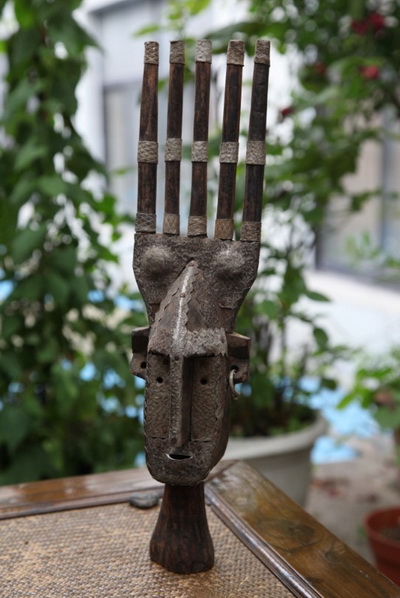African wood carving exhibition unveils art culture of Africa
Source: shanghai.gov.cn Article type: Translation
A few days ago, the African Wood Carving Culture Festival was held at the Shanghai Square Pagoda Garden. People living in that city had experienced the unique charm and flavor of African wood carving art.
Wood carving has always been regarded as one of the important features among Africa’s rich and exotic cultures. It seems like Europe’s stone statues, or China’s ceramics. Mr. Liao Haoxin, the curator of the Wangjia Wood Carving Art Gallery, the international registered artist, and the renowned folk root carving artist, visited Africa five times in spite of the distance from China to Africa. He visited over 50 countries and tribes in Africa, and has already collected nearly 2,000 wood carving human portraits and masks. He selected more than 100 of his collected works and displayed them inside the garden. Among the 100 works, over 30 are the diamond of diamonds, with more than 150 years of history.
African wood carvings look simple and rough, with both exaggeration and simplicity. Its attraction derives from its exposition of real nature and unique art charms. Sitting in the center of the gallery were the statues of an African tribal king and his wife. From the first sight, you will surely learn the facial characteristics of Africans: projecting forehead, big eyes, prominent nose and thick lips. The king and queen’s thrones were supported by four African children. All the detailed characteristics exhibited the great power of an African tribe chief. The king’s scepter is very valuable, about 1.8 meters long, looking simple but powerful. The two-meter-tall wood carving god is the medium, through which Africans communicate with gods, and is assumed to grant good harvests to people when they worship it on their hands and knees. A few well-carved handicrafts are not only counted as ornaments, but also regarded as vessels which can encase treasures. The small statues have no normal human figures or images, nor do they have complicated movements. Instead, they express their own morals through their exaggerated twisted styles. For example, the enlarged breasts can show mothers’ magical power of feeding their children, and the projecting forehead resembles the wisdom of their ancestors, and so on.
Curator Liao was being surrounded by a few curious citizens, “Are the king’s teeth real?” He explained in patience, “They are real. In Africa, people respect the dead more than the alive.”
The curator’s exhibited works are all not for sale, for he plans to build up a new Africa themed gallery and will leave these artworks in Songjiang (松江) for citizens to view.
| Friendship Link |
|
 |
|

